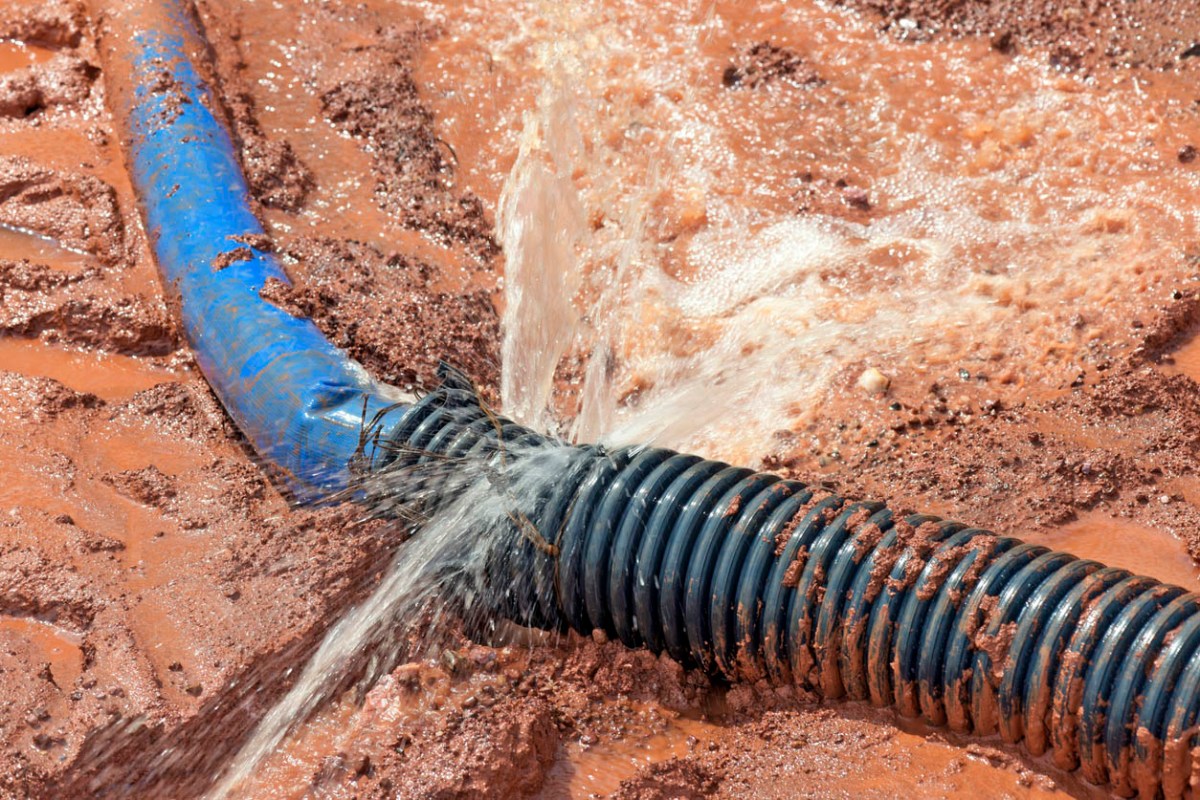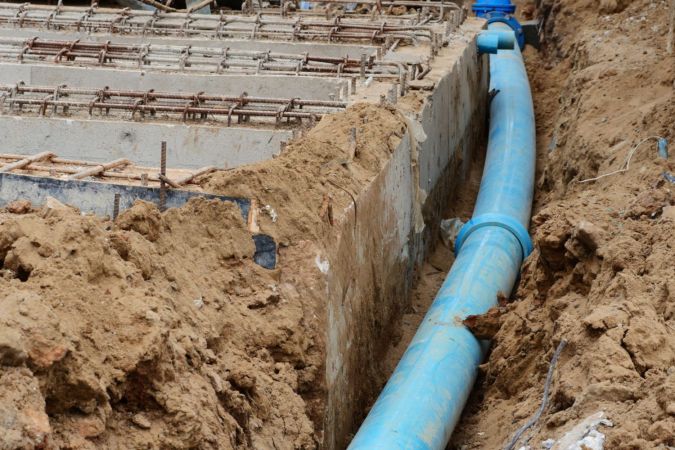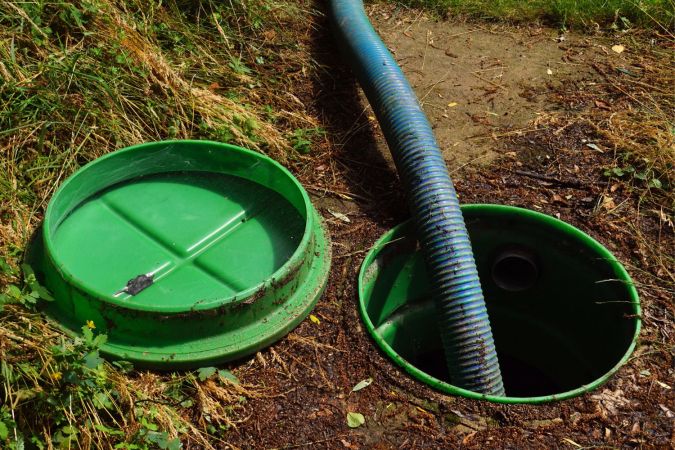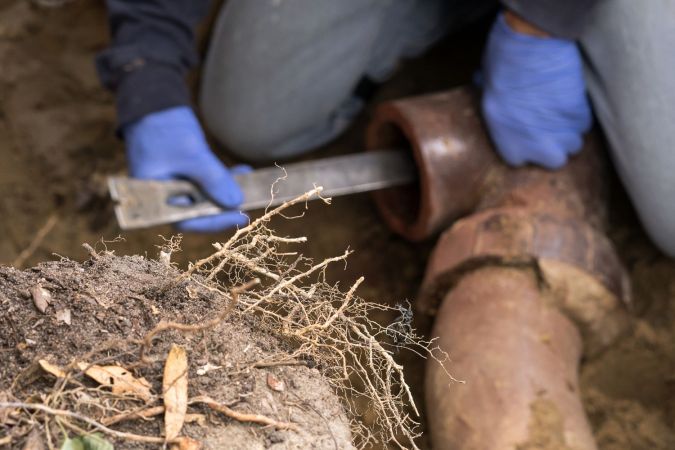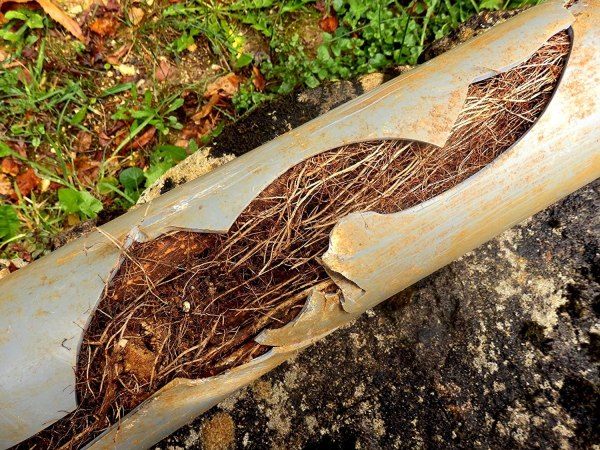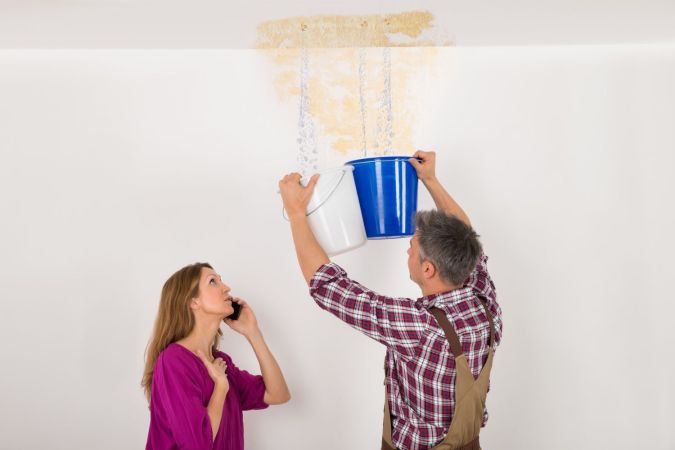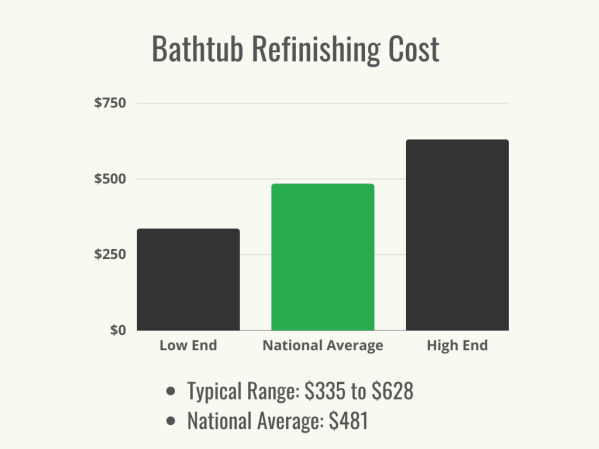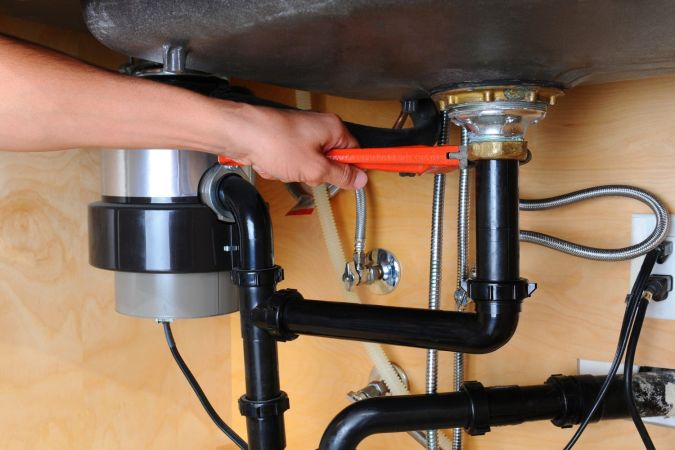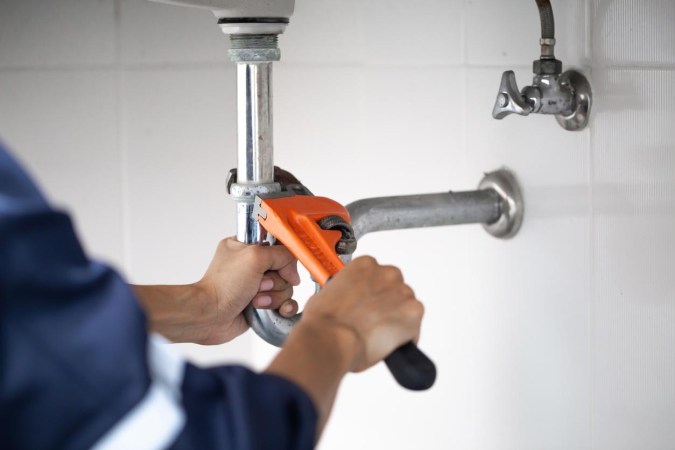We may earn revenue from the products available on this page and participate in affiliate programs. Learn More ›
- Typical Range: $50 to $250 per foot
- National Average: $150 per foot
A sewer line is a single pipe that transports wastewater from inside a home to the main sewer line, where it makes its way to a water reclamation plant. Like any other part of a home’s plumbing system, a sewer line will eventually begin to deteriorate and need either a repair or a complete replacement.
Cracked sewer pipes can emit foul odors, lead to insect and rodent infestations, cause mold and mildew growth, and create a dangerous living environment if not properly repaired. According to Angi and HomeAdvisor, cracked sewer pipe repair costs an average of $150 per foot, with the typical range stretching from $50 to $250 per foot.
This guide will help homeowners learn more about price influencing factors, signs of a broken sewer pipe, and ways to save money on sewer line replacement and repair.
Factors in Calculating Cracked Sewer Pipe Repair Cost

The cost to fix a sewer pipe depends on several factors, with some being more influential than others. Homeowners looking to estimate a cracked sewer pipe repair cost will want to refer to the following considerations.
Pipe Material
Sewer pipes can be made from several different materials. ABS (acrylonitrile-butadiene-styrene) is a commonly used plastic material. It’s lightweight, easy to install, and very affordable compared to other materials. For 48 linear feet of ABS, homeowners can expect to pay between $135 and $254.
PVC (polyvinyl chloride) is another plastic material commonly used for sewer pipes. It has a wider price range of $73 to $376 for 48 linear feet. Two other common materials include copper and cast iron. Both offer superior strength and durability compared to plastic materials, but these benefits come at a price. Cast iron has a price range of $1,104 to $3,600 for 48 linear feet of material, and copper is even more expensive, with a starting price of $3,954 for just under 50 feet of material.
Pipe Location
The location of a sewer pipe greatly influences its repair cost. For example, replacing a sewer line from house to street (or the main sewer pipe) costs between $530 and $2,270. Factors such as longer distances or the need for trenching can drastically raise repair costs to $25,000.
Basement sewer line repair cost depends heavily on the repair method. A trenchless replacement costs between $60 and $250 per foot, since digging is not required for this method. But if a trenchless replacement isn’t available and the pipe has completely collapsed, the repair cost ranges from $400 to $1,200 per 100 linear feet, since the contractor will need to dig a trench in order to properly repair the pipe.
Replacing a sewer line under a concrete slab tacks an additional $150 to $200 per foot on to the average rate of $150 per foot. The extra cost covers labor for the time-consuming task of breaking up the concrete above the line.
Pipe Length
When it comes to repairing sewer pipelines, many contractors charge per foot. This is a simple metric that covers the cost of materials and labor, as longer lengths typically require more work.
A shorter length of sewer line measuring 25 feet to 35 feet typically costs between $1,250 and $8,750 to repair, while a longer portion measuring 45 feet to 55 feet has a repair cost range of $2,250 to $13,750. As a general rule of thumb, homeowners can always expect sewer line replacement costs to increase as more materials and labor are added to the project. For even longer portions of sewer lines, like projects measuring 100 feet to 125 feet, replacement costs range from $5,000 to $31,250.
Extent of Damage
Sewer pipes can be weakened, cracked, or entirely collapsed. When they are in need of attention, the extent of the damage being repaired greatly influences the final cost of the project.
For example, reinforcing a small portion of a sewer pipe is likely to be less expensive than replacing a long stretch of collapsed pipe. This is just one reason why being proactive about sewer line repair is so important. Catching an issue as early as possible can help prevent an invasive, drawn-out, and costly repair later on.
Repair Method
A cracked sewer line can be repaired using several different methods, each with its own benefits and limitations. Each repair type also influences the final project cost.
Pipe bursting is a full replacement method that involves using a tool to expand the existing pipe until it crumbles. A machine pushes the broken-up pipe out of a hole dug at the end of the sewer line, allowing the new pipe to be fed into the same space. This type of repair costs between $60 and $200 per foot.
Cured-in-place pipe lining, or CIPP, is a repair method that can remedy a cracked pipe without the need to dig it up. With this method, an epoxy-coated liner is inserted into a sewer line. It’s inflated and then allowed to dry, forming a new strong and sealed inner surface within a cracked pipe. This type of repair costs between $80 and $250 per foot.
Spin-casting is a method similar to CIPP but is used in areas of a sewer pipe where a liner can’t fit. Instead, a resin lining is sprayed inside a damaged pipe to reinforce it. The cost for this method is the same as for CIPP.
Labor
It can be difficult to estimate labor costs in the early stages of a sewer line repair. There are plenty of variables that can shorten or lengthen the duration of the repair. It may help homeowners to know that the cost of a professional plumber tends to fall between $50 and $150 per hour, depending on their experience.
Some sewer line repair jobs can take several days to complete, while others can be completed in a few hours. This is why many contractors charge a flat fee by linear foot, ensuring they’re fairly compensated for their labor at a rate that doesn’t balloon the total cost.
Geographic Location
The cost of repairing a sewer line varies based on location, mainly due to climate conditions. Colder locations can make it more difficult to reach pipes beneath the frozen ground. For example, in Minneapolis, where winters are long and cold, sewer line repair costs between $1,800 and $6,000, but in Atlanta, where temperatures are warmer throughout the year, sewer pipe repair costs between $600 and $2,300.
Heavily populated areas can result in higher repair costs as well. Los Angeles residents typically pay between $1,400 and $6,200 for sewer line repair, while New Yorkers pay more affordable sewer repair prices, with a range between $1,280 and $3,745. Cincinnati has one of the most expensive ranges, with sewer repair costing between $2,500 and $6,400.

Additional Costs and Considerations
While a sewer pipe’s material, location, and length are important factors to consider when homeowners are estimating cracked sewer pipe repair cost, there are a few other potential costs to keep in mind. The following aren’t always part of a sewer line repair project, but homeowners will want to be aware of them to avoid surprise costs.
Camera Inspection
Cameras are often used to properly diagnose a sewer pipe in distress. Sewer cameras allow plumbers to see any existing issues up close or make note of potential upcoming issues. This means homeowners don’t have to save a camera inspection for when disaster has already struck; it’s also a great preventative measure to take.
The good news is that sewer camera inspections are noninvasive. Grass, landscaping, driveways, walkways, patios, and slabs don’t need to be removed or dug through to reach the pipe in question. This makes it a quick and affordable process. Sewer video inspections cost between $100 and $500.
Traditional vs. Trenchless Repair
When trying to decide between traditional and trenchless sewer line repair, homeowners will want to be aware that there are cost differences to consider. A traditional sewer line repair involves digging out the broken or damaged sewer pipe and then replacing it. This requires digging a trench several feet wide and several feet deep. It’s labor-intensive work that takes time, can literally tear apart a home’s landscaping, and is often more expensive.
Trenchless repair reduces unnecessary labor and skips the invasive digging altogether, offering a faster, cleaner, and more affordable sewer line repair option. Trenchless isn’t always the least expensive method for a repair job, and it’s also not always an option. A traditional route shouldn’t automatically be taken off the table by a homeowner, but in many cases, a trenchless approach is more affordable, as it avoids extra labor hours and cleanup work.
Tree Root Removal
Tree roots can wreak havoc on sewer pipelines, with the potential to cause sinkholes, gurgling toilets, and slow drains. Unfortunately, a sewer line’s moisture and nutrients attract tree roots.
In the early stages, symptoms are minimal, but as roots in a sewer line grow thicker and branch out, they can start to create clogs and eventually break a sewer pipe. Unfortunately, DIY solutions aren’t always effective in preventing serious and expensive issues caused by tree roots. Calling a professional is the best way to address tree roots in a sewer line.
If a camera diagnosis shows tree roots are invading a sewer line, the expected cost to remove them is between $100 and $600. However, this doesn’t include any necessary sewer pipe repair costs that may come afterward.
Yard Cleanup
Yard cleanup is an often overlooked cost consideration during a sewer pipe repair. Most contractors include basic cleanup in their labor costs, but some can charge between $100 and $350.
Sometimes it takes more than basic cleanup to get a yard looking exactly the way it did before sewer line repairs were made. If extensive parts of the yard were dug up for access, laying sod can be a quick aesthetic fix. Sod installation costs an average of $1 to $2 per foot. Repairing a concrete or asphalt driveway costs an average of $1,750; if a patio or walkway was broken up to reach a sewer pipe, repair costs an average of $1,400.
Types of Cracked Sewer Pipe Repairs
There are several methods professionals can choose from when repairing a cracked sewer pipe. Each repair job is unique, and the repair method used may be determined by circumstance rather than preference. The method used does influence the total repair cost, so understanding some of the most common options can help homeowners understand a repair quote.
Cured-in-Place Pipe Lining (CIPP)
CIPP is a trenchless repair method that costs $80 to $250 per foot. This pricing includes the costs of shutting off the service, cleaning the pipeline, and conducting a thorough inspection to ensure the project is carried out safely and efficiently. A contractor inserts a flexible liner into the existing pipe and inflates it. After the liner dries and hardens, the pipe is restored to near-new condition.
CIPP allows contractors to fix sewer lines that are overall structurally sound without the added work, cost, and mess of digging. This method can be used on all types of sewer pipe materials, but for shallow pipes or those that can be reached without digging up too much greenery or breaking through a driveway, a traditional repair method could be cheaper.
Pipe Bursting
Pipe bursting is another trenchless repair method that uses the location of the existing pipe as a guide for a new pipe. Excavation is kept to a minimum, so it’s usually a more affordable repair option. Pipe bursting can be as low as $60 per foot, though more complicated jobs can cost up to $200 per foot.
During pipe bursting, a tool is pushed through the existing pipe, expanding it until it crumbles. Those pieces are then pushed through a hole at the end of the sewer line, creating ample space for the new pipe being dragged behind the same tool. This simultaneously replaces the pipe as the old one is removed.
Trenching
Trenching is a traditional sewer line repair method that involves digging down toward a damaged pipe, removing it, and replacing it. The total cost depends on a variety of factors, including the type of pipe, the width of the pipe, the length of the portion being repaired, and the number of bends and connection points.
Trenching costs between $4 and $12 per foot. Removing dirt to access the pipeline in question ranges from $33 to $67.50 per cubic yard. Homeowners should also consider backfill, or materials used to refill an evacuated space after trenching. Backfill costs between $11 and $18.80 per cubic yard.

Do I Need Cracked Sewer Pipe Repair?
A cracked sewer pipe can quickly go from a nuisance to a serious health hazard. A homeowner will need to have a thorough understanding of the different symptoms cracked sewer pipes display to avoid overlooking an issue for too long. The following are some of the most common signs that point to a possible sewer pipe crack, warranting a call to a professional.
Sewage Backups
Sewage backing up into a home is more likely a sign of a clogged pipe rather than a cracked pipe, but it’s never a sign that all is well. Homeowners will want to keep in mind that one drain that clogs or backs up may not signal an issue with the entire system; the problem is likely localized. But if more than one drain or area is backing up, there’s likely a serious sewer issue at play. Calling a professional to conduct a sewer inspection with a camera is the fastest way to diagnose a serious issue like a sewage backup.
Unpleasant Odors
A properly functioning sewer system does not release unpleasant odors into a home. This is why an odor of sewer gas in a home is one of the clearest signs of a cracked drain pipe. Further inspection is required to determine if a cracked pipe is releasing dangerous sewer gases into a home.
The most common area of a home for sewer odor is the basement, but sewer gases can also be smelled in a yard if there’s a cracked pipe. It’s advised that homeowners contact a professional immediately—and not just because the smell is offensive. Sewer gas can be toxic in high concentrations.
Presence of Mold
A cracked septic pipe can release moisture, leading to mold growth over time. If a home has moldy areas on walls, floors, or ceilings, several possible culprits could be to blame. A cracked septic pipe is a possibility, especially if there’s a foul odor in the air.
Mold spores can cause severe allergic reactions, and they can even cause damage to a home’s interior, exterior, and foundation over time. Mold should be addressed quickly and safely. Simply cleaning away mold won’t keep it from coming back. If a cracked sewer line is to blame, it will need to be repaired, or mold will continue to grow.
Slow or Gurgling Drains
A single slow drain isn’t necessarily a sign of a cracked sewer pipeline. But slow drains throughout the home often signal a blockage, which can eventually lead to a backup problem. If the clogs have been cleared in the past but the problem keeps returning, tree roots breaking into the pipe could be to blame.
Chemical drain cleaners won’t typically work, and they can even corrode cast iron and certain types of plastic drain pipes. Instead, homeowners will want to call in a professional to diagnose and remedy the issue.
While a bit different from slow drains, gurgling drains and pipes can be another sign of an issue with a home’s sewer system. A cracked sewer line can bubble, creating a gurgling noise that can be heard through kitchen and bathroom drains.
Unusually Green Grass
A cracked sewer pipe is essentially dumping fertilizer into a lawn. All those nutrients can quickly create unusually green patches of grass in comparison to the rest of the landscape. While this may not seem like a serious issue at first, ignoring lush grass that signals a cracked sewer line can lead to a buildup of toxins in the soil. If the area is disturbed by being walked upon, these toxins can quickly be released.
If there are other reasons that could create patchy grass, such as unstable weather conditions or the use of herbicides in certain areas of a lawn, suddenly greener spots may not signal a sewer issue, but if there are signs like a foul odor or sudden sinkholes in a lawn, lush green spots could serve as confirmation of a cracked sewer pipe.
Yard Flooding
A yard that suddenly gets soggy could be the result of a cracked sewer line. When this is the case, a foul odor will almost always be present. Homeowners will want to keep in mind that a yard flooded with sewage material is likely to attract insects and rodents. Dangerous sinkholes can also develop, and the strong presence of bacteria can create a serious health hazard. It’s best for homeowners to avoid the area until a professional has confirmed the source of the sudden increase in moisture and the problem has been resolved.
Foundation Issues
Cracks in a concrete slab or supporting walls can signal a cracked sewer pipe. While such developments are typical as homes settle, the sudden appearance of new cracks can be a sign of a broken sewer line washing away the soil supporting the foundation.
If a sewer crack is suspected due to foundation cracks, homeowners will want to schedule an inspection as soon as possible. The problem is only likely to become worse, causing severe structural damage that can be dangerous and expensive to repair. As with so many other signs of a cracked sewer, acting quickly is the best way to save on cracked sewer pipeline repairs and ideally avoid the high cost of foundation repair.
Rodent or Insect Infestation
Rodents can squeeze into small cracks, including those that develop in a sewer pipe. Since sewer pipes are connected to a home, a sudden infestation of rodents can be a sign of a sewer line crack.
Insects can also enter a home via cracks or breaks in a sewer line. Once they find a way in, they can multiply rapidly thanks to stagnant water. If a homeowner is noticing infestations of rodents or insects, even after having an exterminator come out to service their home, a cracked sewer pipe could be the reason. Both rodents and insects can cause serious health issues and need to be dealt with as soon as possible.
Cracked Sewer Pipe Repair: DIY vs. Hiring a Professional
For the handy homeowner, a cracked sewer pipe repair may seem like just another weekend project. But the truth is that a cracked sewer repair isn’t a basic project; it’s a job best left to the professionals for several reasons.
The first is a homeowner’s likely lack of experience and proper equipment. Sewer line repair isn’t a skill that can be learned without hands-on experience. Special tools are also required to access pipes buried several feet below the ground.
DIY cracked sewer repair also comes with a risk of additional damage. Many things can go wrong in a sewer line repair project, and some DIY mistakes can turn into costly professional repairs. A homeowner’s faulty diagnosis can lead to an expensive guessing game when a repair attempt doesn’t remedy the issue.
Safety is also an issue when homeowners are working on a sewer line without adequate experience. Methane gas and dangerous bacteria create a hazardous work environment that should be navigated only by a professional. Hitting a gas line is another risk with a DIY sewer line repair. This can be a costly mistake along with a serious fire and health hazard.
Finally, there are code requirements to consider. A DIY sewer repair job may violate local building and public works codes. In many cases, a permit is required before work on a sewer line can begin, and an inspection is required afterward. If a homeowner gets caught ignoring these required steps, they will likely be subject to steep fines.
It may seem like a DIY cracked sewer pipe repair project is a great way to save some cash, but in all likelihood, skipping out on hiring a professional is likely to cost more in the long run. DIY sewer repair can also be dangerous. When considering a DIY cracked sewer repair versus hiring a professional, homeowners should always take into account their safety and the risk of mistakes that could throw off their budget. Hiring one of the best plumbing services brings safety and expertise to a sewer repair job.
How to Save Money on Cracked Sewer Pipe Repair Cost
Sewer line repair costs between $50 and $250 per foot, which means that a repair job can quickly get expensive. Homeowners can use the following tips to help save money on their repair costs without compromising safety or quality.
- Get more than one quote. Sewer crack repair prices can vary by contractor, as can what’s included in the price. Homeowners will want to focus on finding the contractor who offers the most value over the lowest price.
- Make sewer maintenance a top priority. While all sewer lines will eventually fail, preventing premature wear and tear can put off costly repairs for as long as possible. Regular cleaning, servicing, and inspections can keep the need for repairs at bay.
- Know the signs of a cracked sewer pipe, and don’t put off repair costs. A manageable cracked pipe can quickly turn into an out-of-control broken pipe, which can be a serious problem when sewage is involved. At the first sign of a cracked pipe, homeowners will want to call a plumber to inspect and repair the pipe to avoid further damage.
- Choose trenchless repairs whenever possible. Compared to dig-and-replace repairs, trenchless ones are much more affordable, in most cases 30 percent less than traditional methods.
- Request a video inspection. With a video inspection, no digging is required, and a contractor can provide a more accurate diagnosis. Video inspections ensure repairs are completed only where necessary and that the most cost-efficient approach can be taken.

Questions to Ask About Cracked Sewer Pipe Repair
Repairing a sewer pipe is a job best left to the pros. Homeowners will want to ask all potential candidates the appropriate combination of the following questions. This will ensure they’re hiring a professional with the right experience and price for the job.
- Are you a licensed sewer contractor?
- Do you have an insurance policy that covers your work, your workers, and my home?
- Do you offer free quotes?
- What’s included in the quote?
- Can my sewer line be repaired, or should it be replaced?
- What type of repair are you suggesting?
- Will you complete the work, or will you send a different team?
- When can the job start?
- How long will the job take?
- What steps will you take to protect my property?
- Do you handle any permits and inspections required by local ordinances?
- Is there a warranty for the materials used or for your work?
- If the entire sewer line isn’t being replaced, how long can I expect the rest to last?
- Do you clean up after the project or restore concrete?
- Is a deposit required?
- How do you receive and expect payments?
- What can I do to extend the life of my sewer line?
FAQs
A cracked sewer line is a problem that homeowners cannot ignore. Not only can a broken sewer pipe fill the air with less than pleasant smells, but sewer seepage can also be extremely dangerous. For homeowners still unsure about how to handle a cracked sewer line, the following FAQs may offer clarification.
Q. How do you clean out a sewer line?
Due to the equipment needed and the complexity of the steps, this is a job best left to a professional. For those homeowners willing to give it a go, however, they will first want to loosen the cap on the drain pipe, and then open the cap and let the buildup drain out. Next, they will need to feed an auger into the drain pipe and let it run until the clog has been removed; then they will need to spray a hose down the drain pipe to remove any lingering debris and clean the auger. Finally, they will need to pull the auger back out of the pipe, place the cap back on the drain pipe, and tighten the cap.
Homes with septic systems will require a different method of cleaning, which is also a job best left to the professionals. Septic tank pumping costs are generally a manageable expense, but failure to pump a septic tank when it needs it can lead to much more expensive repairs.
Q. What happens if a sewer pipe breaks?
There are several side effects of a broken sewer line. One is mold growth, which can occur on ceilings or walls near a break. A flooded yard with a foul smell is another common scenario after a sewer pipe breaks. Draining difficulties in bathrooms, kitchen sinks, and washing machines, as well as water damage in a home, can also signal a broken sewer pipe.
Q. How serious is a cracked sewer pipe?
A cracked sewer pipe can release raw sewage into the open and can quickly become a serious issue. Sewage releases gases like methane into the air; this can lead to sore throats, respiratory problems, and even asphyxiation. Additionally, harmful bacteria such as E. coli, salmonella, and pinworms can cause serious infections.
Q. How do I know if my drain pipe is broken?
Common signs of a broken sewer drain pipe include foul smells inside the house, a sudden influx of pests, multiple drains within the home that are slowing down or clogging, and mold or mildew in the basement. If there are ever any signs of a broken sewer drain pipe, a plumber should be called immediately to assess the situation.
Q. Can I unclog a sewer line myself?
Running a plumber auger through a sewer line can help break up clogs and at least get the pipe flowing again, but ultimately, a professional plumber will need to come in to conduct a thorough sewer line cleaning. Otherwise, clogs are likely to continue.
Q. How do I find the main sewer line in my house?
Main sewer lines can typically be found in a basement, crawl space, or garage. Homeowners should search for a pipe approximately four inches in diameter. The pipe will have a screw cap on top with a notch or square knob. Keep in mind that main sewer line cleanout points can be located outdoors as well.
Sources: Angi, HomeAdvisor, HomeGuide, This Old House
